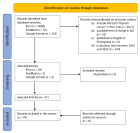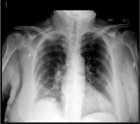Abstract
Short Communication
Declaration of Fumonisin as the Main Dangerous Mycotoxin Produced by Fusarium Species on Maize in Iran
Hossein Saremi*
Published: 29 February, 2024 | Volume 8 - Issue 1 | Pages: 013-014
Our study showed Fusarium spp. can be the most important fungal pathogen of maize causing severe yield losses and producing fumonisins that concern human and animal damages. Actually, other mycotoxins such as aflatoxin contamination have become regular in maize but the appearance of fumonisins was more frequent. However, the fluctuation between years and regions can affect the severity of the infection and then fumonisin production level. This mycotoxin was defined as fumonisin B1, fumonisin B2 and fumonisin B3 with diverse actions. The level of production, concentrations, and damages of fumonisins were found in different locations of maize fields in Iran. However, the fumonisin contents of the isolated samples were more diverse than in other locations. Toxin composition and maximum values differ significantly throughout the climate conditions and maize cultivars. The resistance cultivar of maize against the Fusarium pathogen can be helpful in controlling fumonisin production on the field effectively.
Read Full Article HTML DOI: 10.29328/journal.jpsp.1001125 Cite this Article Read Full Article PDF
Keywords:
Fumonisin; Maize; Human; Animal; Mycotoxin
References
- Fallahi M, Saremi H, Javan-Nikkhah M, Somma S, Miriam Haidukowski M, Logrieco AF, Moretti A. Isolation, Molecular Identification and Mycotoxin Profile of Fusarium Species Isolated from Maize Kernels in Iran Toxins (Basel). 2019; 11(5): 297.
- Leslie JF, Summerell BA. The fusarium laboratory manual (1st ed). Blackwell Pub. 2006; 13.
- Saremi H, Okhovvat SM. Mycotoxin producing Fusarium species associated with plant disease on potato, wheat, corn and animal diseases in northwest Iran. Commun Agric Appl Biol Sci. 2006;71(3 Pt B):1175-85. PMID: 17390876.
- D’mello JPF. Contaminants and toxins in animal feeds. In: Assessing Quality and Safety of Animal Feeds. Rome: Food and Agriculture Organization of the United Nations. 2004; 107-128.
- Santin E. Mould growth and mycotoxin production. In: Diaz DE, editor. The Mycotoxin Blue Book. Nottingham, UK: Nottingham University Press. 2005; 225-234.
- Gashaw M. Review on Mycotoxins in Feeds: Implications to Livestock and human health. E3 Journal of Agricultural Research and Development. 2015; 5:137-0144.
- Whitaker TB, Slate AB, Johansson AS. Sampling feeds for mycotoxin analysis. In: Diaz DE, editor. The Mycotoxin Blue Book. Nottingham, UK: Nottingham University Press. 2005; 1-23.
- Zhang K. Evaluation of Automated Sample Preparation for Mycotoxin Analysis in Foods. J AOAC Int. 2020 Jul 1;103(4):1052-1059. doi: 10.1093/jaoacint/qsz044. PMID: 33241335.
- Alberts JF, Van Zyl WH, Gelderblom WCA. Biologically Based Methods for Control of Fumonisin-Producing Fusarium Species and Reduction of the Fumonisins. Front Microbiol. 2016; 7: 548.
- Davoudi Z, Saremi H, Ahmadzadeh M, Malihipour A. Effectives of Bacillus velezensis UTB96 on reduction of zearalenone produced by Fusarium graminearum isolated from wheat. Iranian Journal of Plant Protection Science. 2020; 51.
- Schaafsma AW, Hooker DC. Climatic models to predict occurrence of Fusarium toxins in wheat and maize. Int J Food Microbiol. 2007 Oct 20;119(1-2):116-25. doi: 10.1016/j.ijfoodmicro.2007.08.006. Epub 2007 Aug 19. PMID: 17900733.
Figures:
Similar Articles
-
Control of phytopathogenic microorganisms of post-harvest in tomato (Lycopersicon esculentum Mill.) with the use of citrus extractRueda Puente Edgar Omar*,Ruíz-Alvarado Cristina,Juan José Reyes-Pérez,Hernández-Montiel Luis Guillermo,Amador Bernardo. Control of phytopathogenic microorganisms of post-harvest in tomato (Lycopersicon esculentum Mill.) with the use of citrus extract. . 2018 doi: 10.29328/journal.jpsp.1001018; 2: 037-043
-
Avermectins: The promising solution to control plant parasitic nematodesMohamed S Khalil*,Dalia M Darwesh. Avermectins: The promising solution to control plant parasitic nematodes. . 2019 doi: 10.29328/journal.jpsp.1001036; 3: 081-085
-
Renal function effects of FDS, a saponin isolated from Filicium decipiens seeds: Biochemical and Histopathological studiesRomero MP Brandao-Costa*,Juanize Matias S Batistaa,Thiago Pajeu Nascimento,Ana LF Porto. Renal function effects of FDS, a saponin isolated from Filicium decipiens seeds: Biochemical and Histopathological studies. . 2019 doi: 10.29328/journal.jpsp.1001040; 3: 107-110
-
Ion transporters and their molecular regulation mechanism in plantsFaiçal Brini*,Walid Saibi. Ion transporters and their molecular regulation mechanism in plants. . 2021 doi: 10.29328/journal.jpsp.1001058; 5: 028-043
-
Effects of animal manures on growth and yield of maize (Zea mays L.)Melese Damtew Asfaw*. Effects of animal manures on growth and yield of maize (Zea mays L.). . 2022 doi: 10.29328/journal.jpsp.1001071; 6: 033-039
-
Importance of BLUP method in plant breedingMahdi Tajalifar*,Mohammad Rasooli. Importance of BLUP method in plant breeding. . 2022 doi: 10.29328/journal.jpsp.1001072; 6: 040-042
-
Plant molluscicide based on Smolevka white (Silene Latifolia) as prevention of pastoral helminthiasis of animalsAN Postevoy,ON Andreyanov. Plant molluscicide based on Smolevka white (Silene Latifolia) as prevention of pastoral helminthiasis of animals. . 2022 doi: 10.29328/journal.jpsp.1001074; 6: 052-056
-
Mitigation and adaptation to climate change of plant pathogensFrancesco Lops*. Mitigation and adaptation to climate change of plant pathogens. . 2022 doi: 10.29328/journal.jpsp.1001082; 6: 101-102
-
An overview of the developments of nanotechnology and heterogeneous photocatalysis in the presence of metal nanoparticlesTigabu Bekele Mekonnen*. An overview of the developments of nanotechnology and heterogeneous photocatalysis in the presence of metal nanoparticles. . 2022 doi: 10.29328/journal.jpsp.1001083; 6: 103-114
-
Evaluation of Biostimulants Based on Recovered Protein Hydrolysates from Animal By-products as Plant Growth EnhancersH Pérez-Aguilar*, M Lacruz-Asaro, F Arán-Ais. Evaluation of Biostimulants Based on Recovered Protein Hydrolysates from Animal By-products as Plant Growth Enhancers. . 2023 doi: 10.29328/journal.jpsp.1001104; 7: 042-047
Recently Viewed
-
FITT-CORRECT: Updated dynamic and evidence-based principle of exercise prescriptionShambhu P Adhikari*,Jarugool Tretriluxana,Rubee Dev,Emily Eglitis,Nistha Shrestha,Cheryl Kerfeld6. FITT-CORRECT: Updated dynamic and evidence-based principle of exercise prescription. J Nov Physiother Rehabil. 2021: doi: 10.29328/journal.jnpr.1001039; 5: 005-009
-
Unusual cause of parietal thoracic pain: A case reportMohamed Labied*,Hayat Lhajoui,Najwa Touil,Omar Kacimi,Nabil Chikhaoui . Unusual cause of parietal thoracic pain: A case report. Arch Case Rep. 2020: doi: 10.29328/journal.acr.1001040; 4: 046-047
-
Zn2+ Ions-Immune Virucidal activities for children and adults with preventions against 2019-nCoV and COVID-19 infectionTsuneo Ishida*. Zn2+ Ions-Immune Virucidal activities for children and adults with preventions against 2019-nCoV and COVID-19 infection. J Child Adult Vaccines Immunol. 2020: doi: 10.29328/journal.jcavi.1001006; 4: 006-014
-
Exophthalmos Revealing a Spheno Temporo Orbital MeningiomaHassina S*, Krichene MA, Hazil Z, Bekkar B, Hasnaoui I, Robbana L, Bardi S, Akkanour Y, Serghini L, Abdallah EL. Exophthalmos Revealing a Spheno Temporo Orbital Meningioma. Int J Clin Exp Ophthalmol. 2024: doi: 10.29328/journal.ijceo.1001055; 8: 001-003
-
Unveiling the Impostor: Pulmonary Embolism Presenting as Pneumonia: A Case Report and Literature ReviewSaahil Kumar,Karuna Sree Alwa*,Mahesh Babu Vemuri,Anumola Gandhi Ganesh Gupta,Nuthan Vallapudasu,Sunitha Geddada. Unveiling the Impostor: Pulmonary Embolism Presenting as Pneumonia: A Case Report and Literature Review. J Pulmonol Respir Res. 2025: doi: 10.29328/journal.jprr.1001065; 9: 001-005
Most Viewed
-
Evaluation of Biostimulants Based on Recovered Protein Hydrolysates from Animal By-products as Plant Growth EnhancersH Pérez-Aguilar*, M Lacruz-Asaro, F Arán-Ais. Evaluation of Biostimulants Based on Recovered Protein Hydrolysates from Animal By-products as Plant Growth Enhancers. J Plant Sci Phytopathol. 2023 doi: 10.29328/journal.jpsp.1001104; 7: 042-047
-
Sinonasal Myxoma Extending into the Orbit in a 4-Year Old: A Case PresentationJulian A Purrinos*, Ramzi Younis. Sinonasal Myxoma Extending into the Orbit in a 4-Year Old: A Case Presentation. Arch Case Rep. 2024 doi: 10.29328/journal.acr.1001099; 8: 075-077
-
Feasibility study of magnetic sensing for detecting single-neuron action potentialsDenis Tonini,Kai Wu,Renata Saha,Jian-Ping Wang*. Feasibility study of magnetic sensing for detecting single-neuron action potentials. Ann Biomed Sci Eng. 2022 doi: 10.29328/journal.abse.1001018; 6: 019-029
-
Physical activity can change the physiological and psychological circumstances during COVID-19 pandemic: A narrative reviewKhashayar Maroufi*. Physical activity can change the physiological and psychological circumstances during COVID-19 pandemic: A narrative review. J Sports Med Ther. 2021 doi: 10.29328/journal.jsmt.1001051; 6: 001-007
-
Pediatric Dysgerminoma: Unveiling a Rare Ovarian TumorFaten Limaiem*, Khalil Saffar, Ahmed Halouani. Pediatric Dysgerminoma: Unveiling a Rare Ovarian Tumor. Arch Case Rep. 2024 doi: 10.29328/journal.acr.1001087; 8: 010-013

HSPI: We're glad you're here. Please click "create a new Query" if you are a new visitor to our website and need further information from us.
If you are already a member of our network and need to keep track of any developments regarding a question you have already submitted, click "take me to my Query."
























































































































































